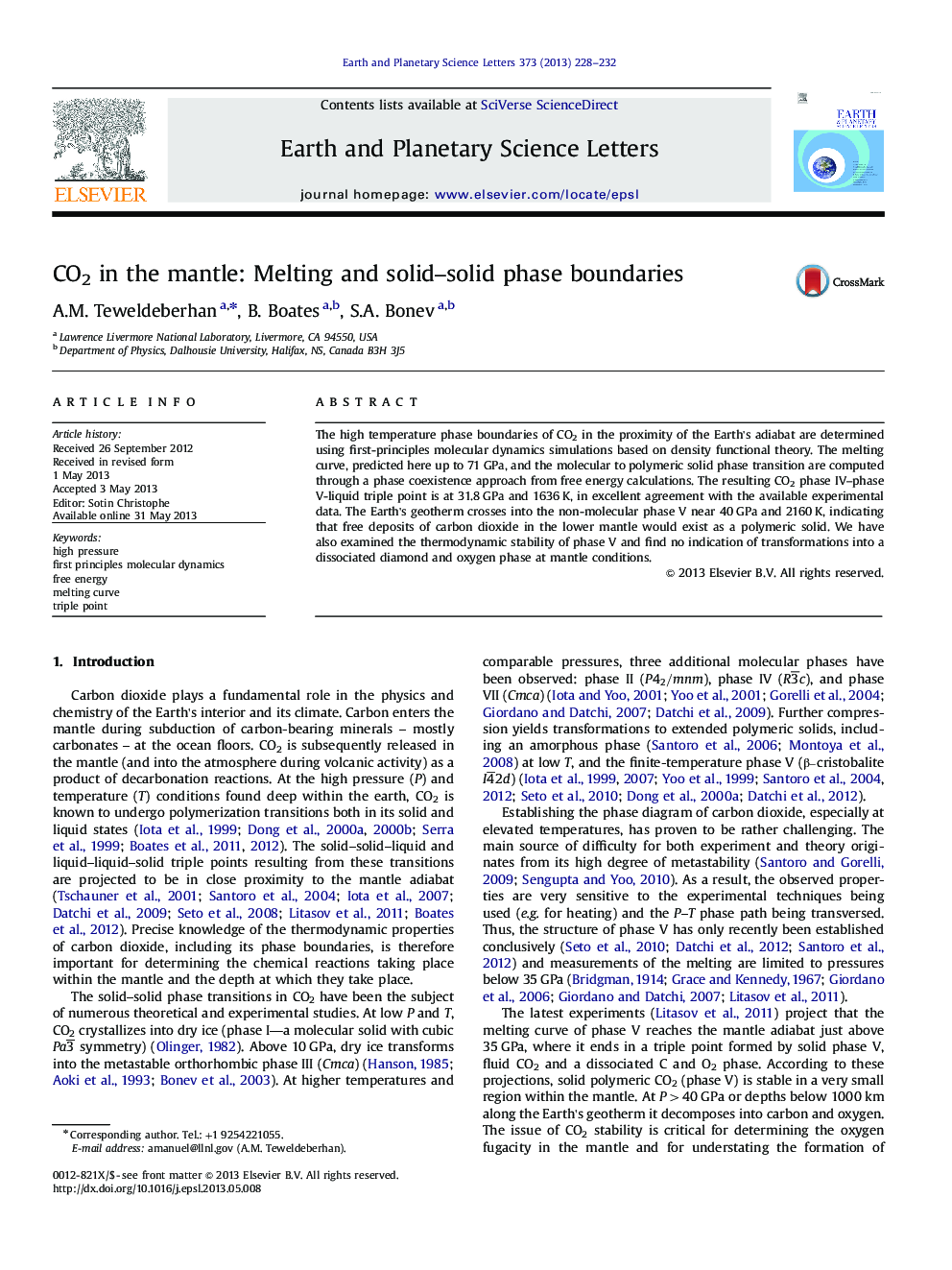| Article ID | Journal | Published Year | Pages | File Type |
|---|---|---|---|---|
| 4677081 | Earth and Planetary Science Letters | 2013 | 5 Pages |
The high temperature phase boundaries of CO2 in the proximity of the Earth's adiabat are determined using first-principles molecular dynamics simulations based on density functional theory. The melting curve, predicted here up to 71 GPa, and the molecular to polymeric solid phase transition are computed through a phase coexistence approach from free energy calculations. The resulting CO2 phase IV–phase V-liquid triple point is at 31.8 GPa and 1636 K, in excellent agreement with the available experimental data. The Earth's geotherm crosses into the non-molecular phase V near 40 GPa and 2160 K, indicating that free deposits of carbon dioxide in the lower mantle would exist as a polymeric solid. We have also examined the thermodynamic stability of phase V and find no indication of transformations into a dissociated diamond and oxygen phase at mantle conditions.
•Any free deposits of CO2 deep in the Earth's lower mantle would prefer a polymeric solid state over a fluid one.•The computed phase IV–phase V-liquid triple point is at 31.8 GPa and 1636 K.•The polymeric solid phase V of CO2 does not dissociate into diamond and oxygen at mantle conditions.
